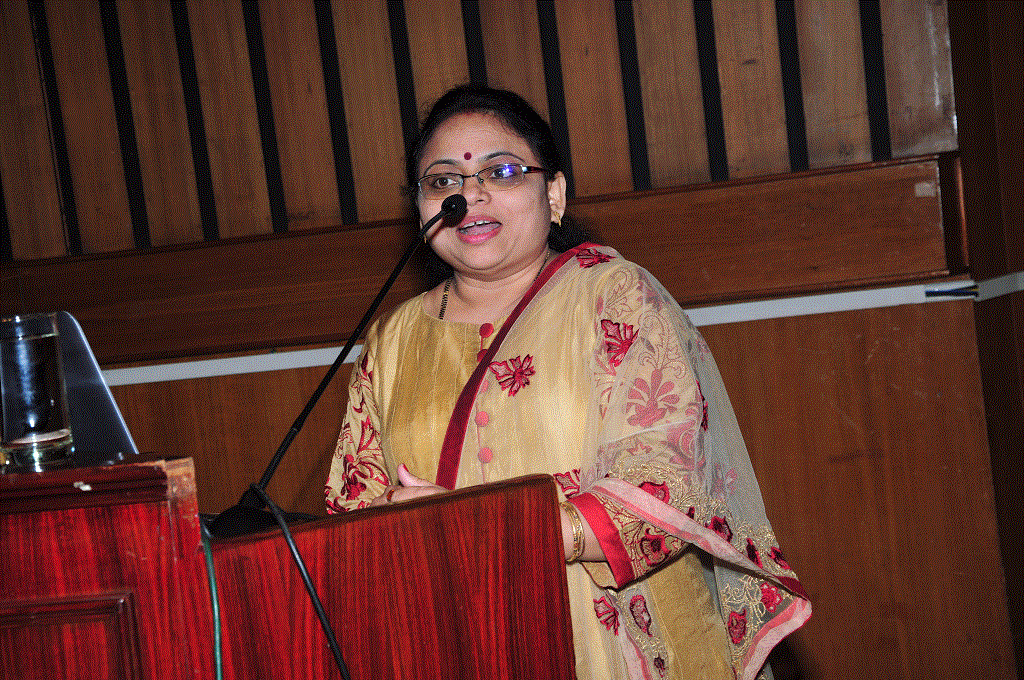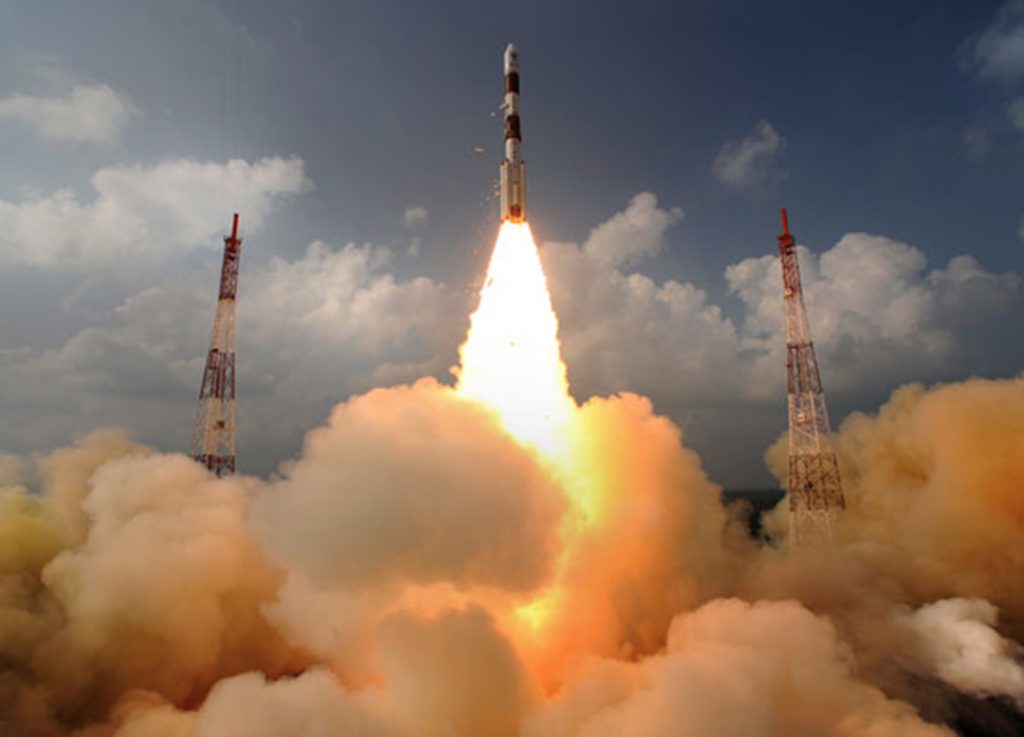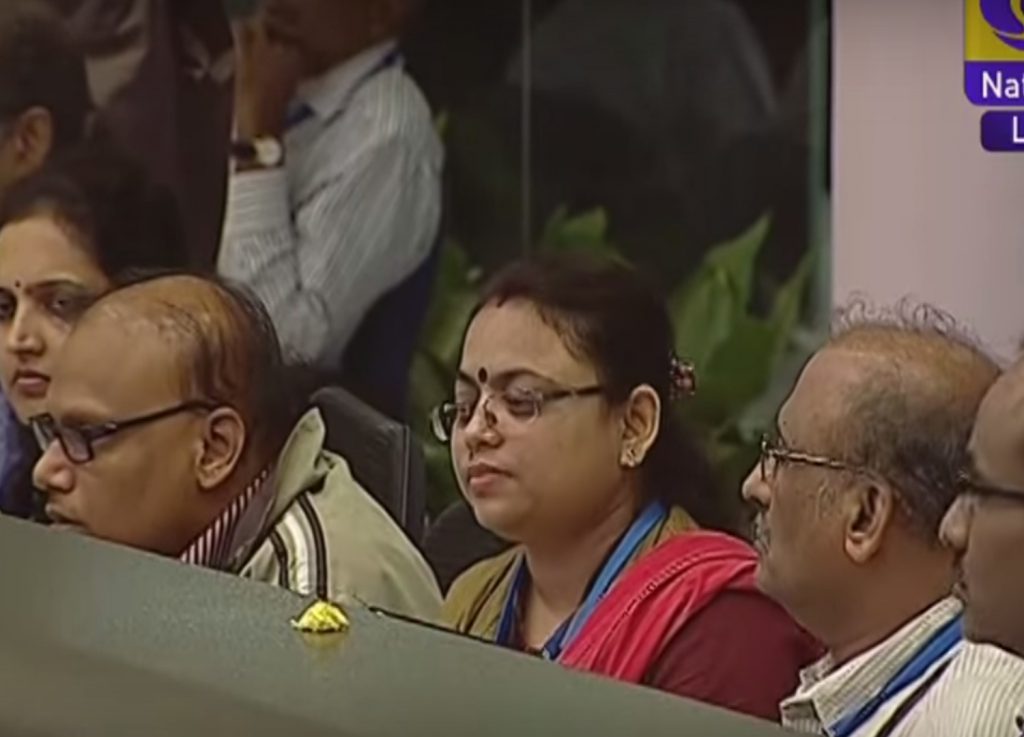
Ritu Karidhal completed her MTech from the Department of Aerospace Engineering, IISc, in 2003. A senior scientist at the Indian Space Research Organization (ISRO), she has participated in many of its critical missions, including the recent Chandrayaan-2. As a Deputy Operations Director, Karidhal played a key role in steering the Mars Orbiter Mission (MOM), India’s first interplanetary mission. MOM, also called Mangalyaan, was launched on 5 November 2013 and has been successfully orbiting the Red Planet since 24 September 2014.
For her contributions, Karidhal received the IISc Distinguished Alumna Award in December 2019 at the Institute’s annual alumni reunion. The following is an edited transcript of the talk she gave at the event.
Indian astronomy was at its peak in the 5th century under the great astronomer Aryabhatta. Then, due to waves of invasions and colonisation, India faced a decline in science. Not until independence in 1947 could we make a fresh start.
The story of India’s space programme goes back to the 1960s, to the vision of the great physicist Dr Vikram Sarabhai who wanted to use space technology to solve the problems of the common man and society. But it was not an easy task for him to convince the government of the day about the relevance of the space programme to the nation’s development. Eventually, he obtained the funds needed for the programme to begin.
The Indian space programme had very humble beginnings with extremely limited resources. In the present, we see so many sophisticated labs and testing centres. At that time, we did not have good infrastructure. All the work started in a little shed.
In 1975, we had our first satellite launch, but that was with the help of the USSR. We had our first major breakthrough with Chandrayaan-1. This mission detected water on the Moon for the first time, thus creating history, and proved that India’s and ISRO’s satellites could also contribute to major discoveries in space.
After this, our next goal was Mars.
Why Mars?
I’ve heard many people, even students and small kids, asking why we should go to Mars or the Moon. I see three main reasons why.
One, there are many unanswered questions about Mars. Is there any life on Mars? Is there water? Is colonisation possible in the near future? Most importantly, can we learn something about the Earth’s past or predict its future? Billions of years ago, Mars had an abundant amount of water and a sufficiently thick atmosphere. But then, over the years, while our planet flourished with life, Mars lost all its features which could sustain life. The data which we can collect using our instruments can tell us something more about why this happened.
The second reason is improving the quality of life on Earth itself. For example, a computer algorithm that was developed for one of the space programmes to take X-ray images did a better job of detecting breast cancer in its initial stages than the conventional method. When we do some work in one field, it may lead to a revolutionary change in another field. This cross-pollination can lead to a better quality of life.
The third reason is to inspire the next generation of space explorers who can contribute to the growth of the nation.
This is why ISRO’s next venture was the mission to Mars.
Uncharted territory
One of the toughest challenges was completing this project in 18 months, when we did not have any legacy. We had been to the Moon, and we had the satellite that revolved around it. But that mission was limited to operating in Earth’s gravity. We did not have any experience in how to leave Earth’s gravity-well and enter a different one.
One of the toughest challenges was completing this project in 18 months, when we did not have any legacy
Another challenge is that, the farther we go, the longer it takes for the signal to reach us. The maximum distance from Earth to Mars can go up to 400 million kilometres. At this distance, the signal may take 20-40 minutes to reach us.
It meant that we had to build systems that are capable of self-diagnosis and self-recovery, because micromanagement from the Earth is not possible. Onboard autonomy was a totally new venture for us. We had many brainstorming sessions with engineers from all fields: mechanical, computational, thermal, structural, sensors, and so on. We built a network of autonomy with different levels of fail detection, isolation and recovery. Thousands of lines of code were implemented on the onboard computers, thoroughly tested and reviewed.
At this time, 51 such missions had already been attempted in the world and only 21 had been successful. No one had done it in their first attempt. We were also really struggling hard to get the hardware and software in place. But in the end, within 10 months, we could achieve the target.
Made in India

All the parts of the satellite were indigenously developed. One was the propulsion system, which provides the thrust and energy to leave Earth’s gravity-well and enter Mars’ gravity-well. The engine used was adapted from one of the earlier geosynchronous satellites. The main challenge was that it had to work after sleeping for 10 months of cruising, and re-ignite at the correct time.
Other major elements were the antennas, the “ears” of the spacecraft. We had three different types of antennas: low gain, medium gain and high gain. The low-gain antenna has a bigger beam, for short distances. Once we go deep into space, the antenna size increases and the beam width decreases. The main challenge was to perfect the sensitivity of the high-gain antenna to work and respond at a distance of 400 million km. This is similar to hearing a person’s whisper across a soccer field.
Another challenge was to maintain the orientation of the satellite so that it is always in line with the Earth, to ensure that communication is not lost. The antenna had to respond at all times, at both nearest and farthest distances from Earth.
We also had to plan a precise trajectory that would take the satellite from Earth to Mars. Our main requirement was minimum fuel use, because we had to limit the weight of the spacecraft to a given amount or else the launch vehicle will not be able to lift off.
At the Sriharikota Range, when any launch vehicle lifts off, it injects the satellite either over Mauritius or near the east coast of Australia. But here, our requiremen was that the launch vehicle should inject the satellite over the west coast, in the Pacific region. The injection point would have to be over the ocean, but we did not have any ground station, control centres or antennas over the ocean. So we decided to deploy two ships, which took two months to reach their destination.
Very close to the launch dates, bad weather conditions over the Pacific delayed us by 10 days. We were racing against time. Finally, on the 5th of November 2013, our mighty PSLV [Polar Satellite Launch Vehicle] took off and put the spacecraft into its first parking orbit successfully.

Dhawan Space Centre SHAR, Sriharikota (Photo courtesy: Ritu Karidhal)
The next unique part was the slingshot trajectory [a slingshot uses the gravity of a planetary object to give the satellite speed and save fuel]. With each operation, each burn, every time the satellite comes close to Earth, we impart some extra energy so that the orbit’s maximum distance keeps on increasing. Each operation demanded accurate performance. If we missed anything here, there would be a fuel penalty and we may not have been able to leave Earth’s gravity.
Twenty-five days later came the final manoeuver: a final energy transfer to the satellite to leave Earth’s gravity. Many missions of NASA, or from Russia, Japan and China, have failed at this stage. But India and ISRO made history on 30 November 2013 when the satellite left Earth’s gravity in its first attempt.
India and ISRO made history on 30 November 2013 when the satellite left Earth’s gravity in its first attempt
The satellite had to follow the direction and path precisely. NASA scientist Charles Elachi [Director, Jet Propulsion Lab] described our challenge with an example: If you hit a golf ball from India towards a hole located near Los Angeles, the ball has to fall straight into the hole. To make it a little bit more challenging, the hole is moving.
We had to track the path and the direction very closely, and also watch for any disturbances such as solar radiation pressure, using technologies that were new to us, such as two-way doppler and delta-DOR technology.
21 minutes of terror
After travelling 650 million km in 10 months, the spacecraft finally reached within 500 km of Mars. But this did not mean we had completed the mission.
When a satellite nears a planet, the planet exerts its gravitational force on it and the satellite’s energy increases. When the energy is increasing, it cannot fall into the planet’s gravity-well. It will merely fly by. So we had to perform a precise manoeuvre where we had to kill the satellite’s velocity to a very precise value so that it falls into Mars’ gravity-well.

PSLV into Mars’ orbit (Photo courtesy: Ritu Karidhal)
Then, D-Day arrived. As the deputy operations director, my team and I were responsible for ensuring that this operation takes place as planned. There would be no second chance.
On the 24th of September 2014, around 7 am IST, we got the first signal from the satellite indicating the correct start of the onboard sequence. Twenty one minutes later, the engines started firing, and that was the time when everyone thought that, yes, 50 percent of the mission has been achieved.
But then, four minutes later, the signal stopped. What had happened?
Actually, the satellite had gone behind Mars. The geometry was such that when this operation was happening, Mars was blocking the antennas. We were not getting any signal.
For those 21 minutes, all eyes in the control centre were glued to the screen, waiting for the signal to come back. There was utter silence in the whole centre. And then, at 8 am IST, history was made. The Mars Orbiter Mission successfully entered the Martian orbit.
Mission with many firsts
This Mission had many firsts:
This was the first Mars mission to succeed in its first attempt.
It was the most economical interplanetary mission in the world (Rs 450 crores; other contemporary missions are estimated to have cost ~Rs 6000 crores).
It was realised in the shortest time – within 18 months.
It was the first Indian satellite that had full-scale onboard autonomy.
The youngest team of women and men scientists worked for this mission.
Now the Mars Orbiter Mission has completed five years. It is continuing to send huge amounts of data. With a bird’s eye view, we can capture both the north pole and the south pole of Mars, and also see how the dynamics of the atmosphere change. It has many instruments that keep sending data, and all this data is available for research students to analyse.
But I feel that the most important contribution of the Mars Orbiter Mission can be seen in a letter written by a young boy to the Chairman of ISRO, stating how proud he feels of ISRO and how he desires to join ISRO.

Letter written by a young boy to the Chairman of ISRO praising the
successful launch of the Mars Orbiter Mission (Photo courtesy: Ritu Karidhal)
This Mission created and stirred inspiration in the mind of every Indian student. It created awe and fervour towards science in the whole country. The biggest thing that the Mission achieved is empowering 1.3 billion people, and making them realise the inner strength and power of Indians to reach a far-off planet, and showing to the whole world that we are second to none.




